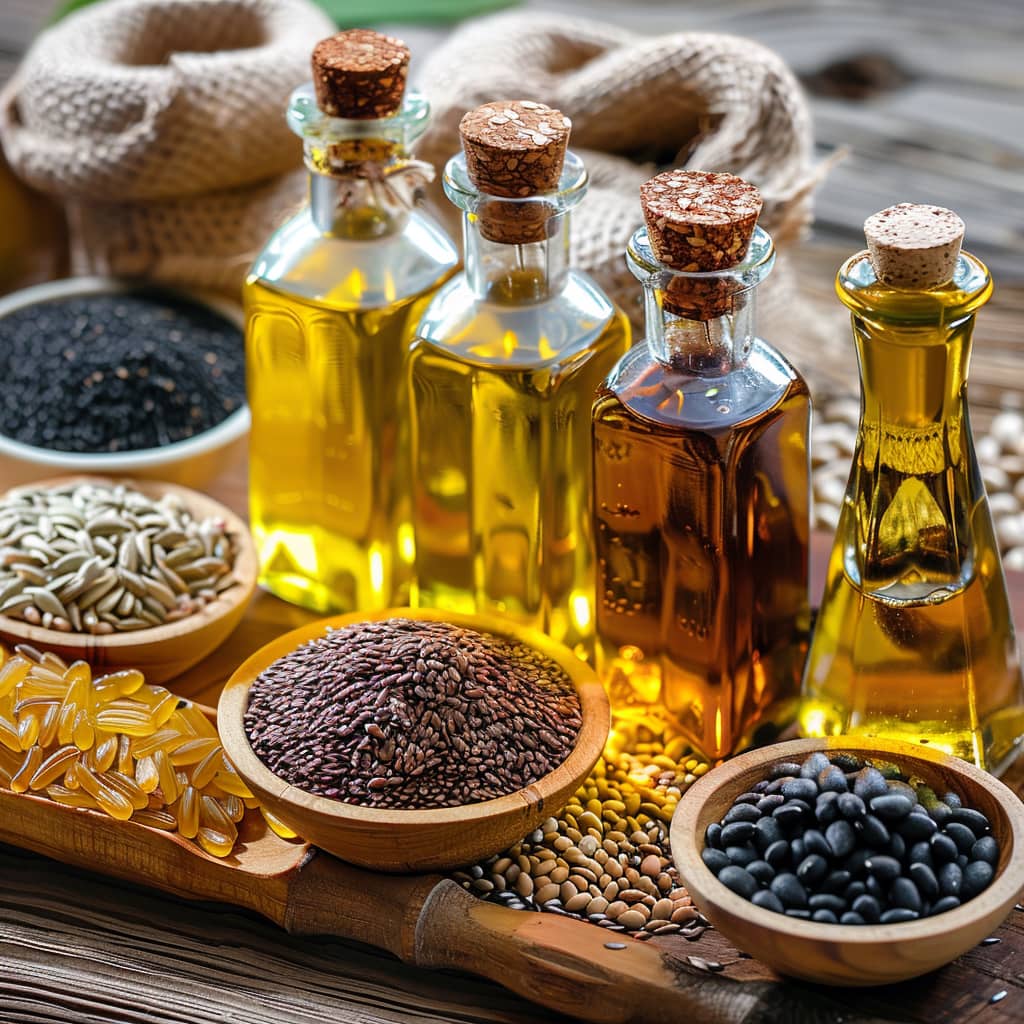Nutritional expert and Nutritional Advisor to Wiley’s Finest fish oils, Alexa Mullane, has delved into one of the most debated topics in modern nutrition: seed oils.
Known for their ubiquitous presence in kitchens and processed foods worldwide, seed oils have sparked a polarizing discourse among health enthusiasts and professionals alike.
Are they beneficial or harmful? Mullane, with her extensive expertise, sheds light on this intricate subject, offering a balanced perspective on the use and impact of these controversial oils.
Why are people saying that seed oils are bad?
Seed oils and vegetable oils (such as sunflower, rapeseed, soyabean, corn etc) contain high levels of omega-6 fatty acids.
When these fatty acids are heated up for cooking (especially with deep-fat frying), a damaging substance called hydroxynonenal is generated.
This substance is created by oxidising the omega-6 fatty acids. But cooking is not the only way that hydroxynonenal is created – it has been found that even when not heating the oils, our bodies can oxidise the fats in response to oxidative stress on the body (which can be caused by alcohol, medications and chronic inflammation).
The problem with hydroxynonenal is that it can cause inflammation, impair cellular function and even lead to cell death, and it has been identified as a mediator in various diseases including Alzheimer’s, Stroke and Cardiovascular Disease. (1)
So why do we use them for cooking so much?
In the 1950s, the idea that saturated fats cause heart disease was introduced but this was based on weak evidence. (2)
This formed the basis of government health policies, and we were encouraged to switch from cooking with saturated fats like lard, butter and tallow to unsaturated fats like vegetable oils and margarine.
However, new studies and re-examinations of the evidence now conclude that saturated fats have no effect on cardiovascular disease, stroke or total mortality.
In fact, a paper published in the British Medical Journal found that there is a positive association between coronary heart disease, total mortality and trans fats (trans-unsaturated fatty acids which are found in processed foods). (3,4)
Are there any other reasons why we might want to avoid seed oils?
Another issue that arises with high intakes of omega-6 fatty acids from seed oils is that within the body there is competition for the enzymes that convert omega-6 and omega-3 fatty acids into their various forms.
Western diets are typically high in omega 6 and low in omega 3 (found in oily fish), and so the body will prioritise converting the omega 6s, meaning that omega-3 levels will suffer.
DHA is one type of omega 3 that can only be derived from food or from converting EPA or ALA (the other forms of omega 3).
DHA is extremely important for the brain so without an adequate supply the brain can’t function properly.
This means that when there’s too much omega-6 in the body, we can’t benefit from the anti-inflammatory and neuroprotective effects of omega-3.
But are seed oils really that bad and should we still be using them?
Seed oils contain high amounts of omega-6 polyunsaturated fatty acids (PUFA). Some of these fatty acids, such as Arachidonic Acid, are found in abundance in the brain and are essential for the formation of new neurons and synapses.
These fats are essential for the proper functioning of our nervous system and we do need to include them in the diet in small amounts. (1)
Should we be using seed oils in cooking?
Everything in moderation. Using small amounts of these oils is unlikely to cause much harm, but the evidence points to deep frying being the worst cooking method for our health.
It’s best to use these oils cold if possible and keep them out of the light (preferably in the fridge) to avoid oxidation.
What alternative oils are there for cooking with?
It’s safer to use saturated fats like coconut oil, tallow or ghee for cooking because they have a much higher smoke point and therefore don’t oxidise as easily.
Olive oil can be used for cooking but is best at lower temperatures (up to 180 Celsius) so avoid using olive oil for stir-frying.
How to optimise the Omega 6 to Omega 3 ratio?
Eat 2-3 portions of oily fish (such as salmon, mackerel, anchovies, sardines, herring and trout) per week, and take a daily Omega-3 supplement with good levels of EPA and DHA like the Wiley’s Finest Peak EPA capsules.
This will mean that if Omega-3 is higher in the body, it will have an anti-inflammatory effect and there won’t be as much competition for the enzymes to convert them for the body to use.
Key takeaways:
– Omega-6 found in seed oils is essential for the body but the amounts we eat (and how we cook them) can be problematic.
– Try to switch to saturated fats for cooking where possible.
– Use seed and vegetable oils sparingly, preferably cold.
– Avoid processed foods due to their levels of trans fats.
– Eat oily fish and take a high-quality daily Omega-3 supplement to offset the levels of Omega-6






